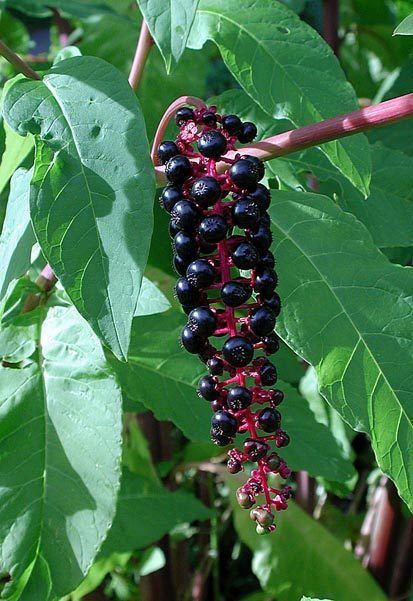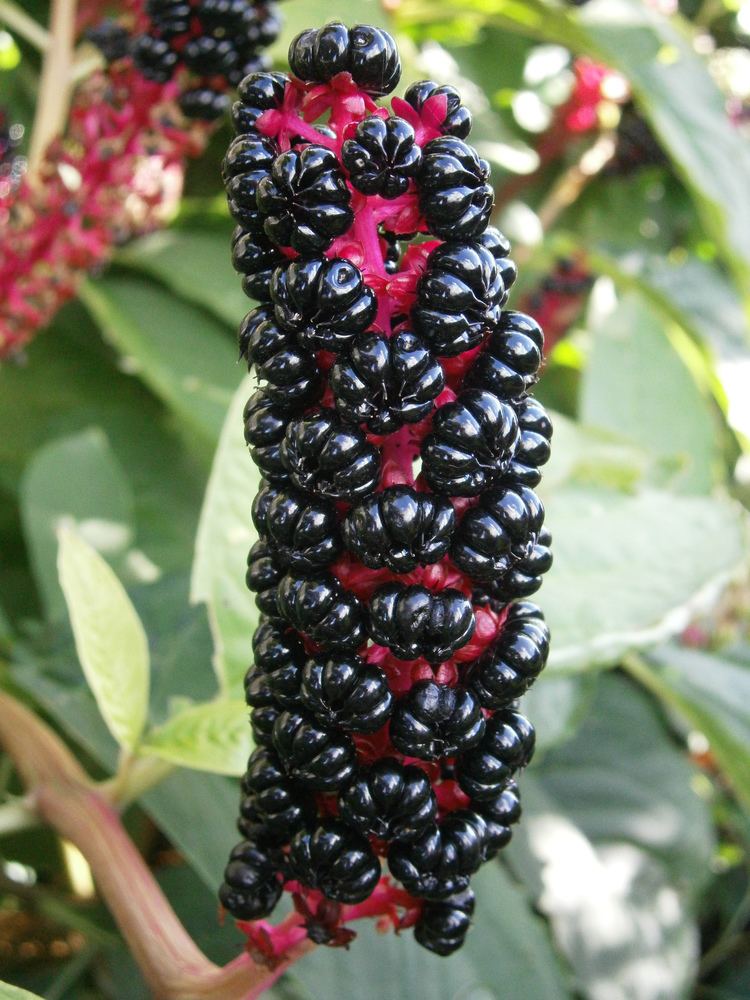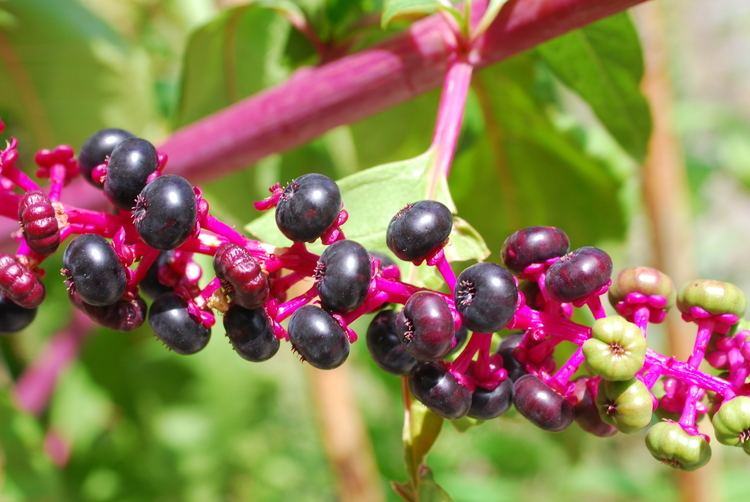Scientific name Phytolacca Rank Genus | Family Phytolaccaceae Higher classification Phytolaccaceae | |
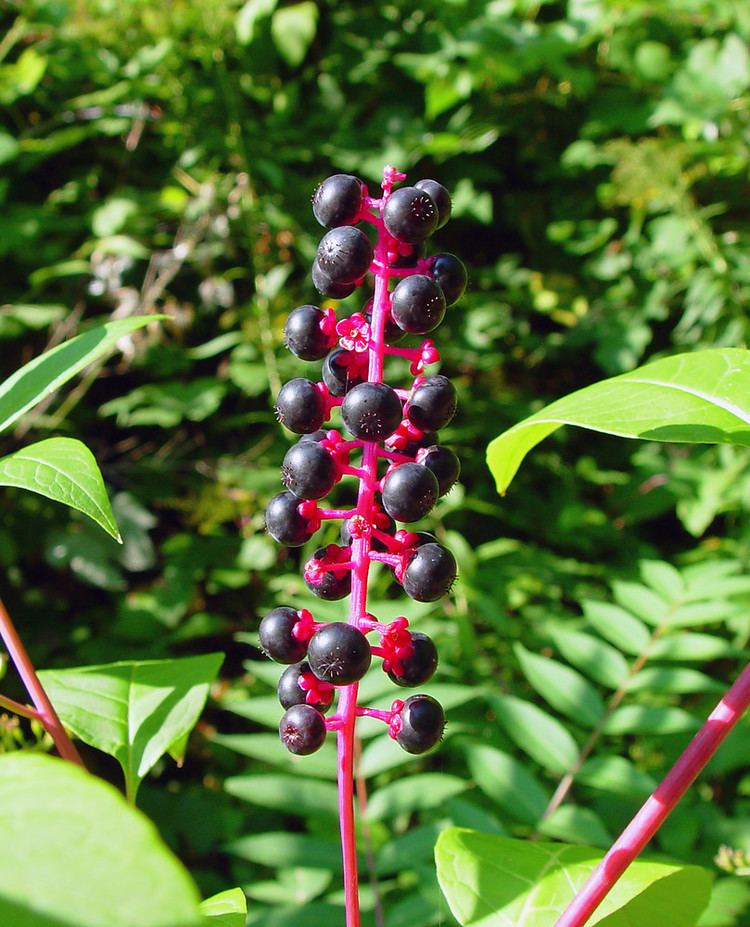 | ||
Lower classifications American pokeweed, Indian pokeweed, Phytolacca dioica, Pokeweed, Phytolacca icosandra Similar Caulophyllum thalictroides, Mahonia aquifolium, Mugwort | ||
Plant portrait pokeweed phytolacca americana
Phytolacca is a genus of perennial plants native to North America, South America, East Asia and New Zealand. Some members of the genus are known as pokeweeds or similar names such as pokebush, pokeberry, pokeroot or poke sallet. Other names for species of Phytolacca include inkberry and ombú. The generic name is derived from the Greek word φυτόν (phyton), meaning "plant," and the Latin word lacca, a red dye. Phytolaccatoxin and phytolaccigenin are present in many species which are poisonous to mammals if not cooked properly. However, the berries are eaten by birds, which are not affected by the toxin because the small seeds with very hard outer shells remain intact in the digestive system and are eliminated whole.
Contents
- Plant portrait pokeweed phytolacca americana
- Eattheweeds episode 07 pokeweed phytolacca americana
- Selected species
- Formerly placed here
- Ecology
- Uses
- References
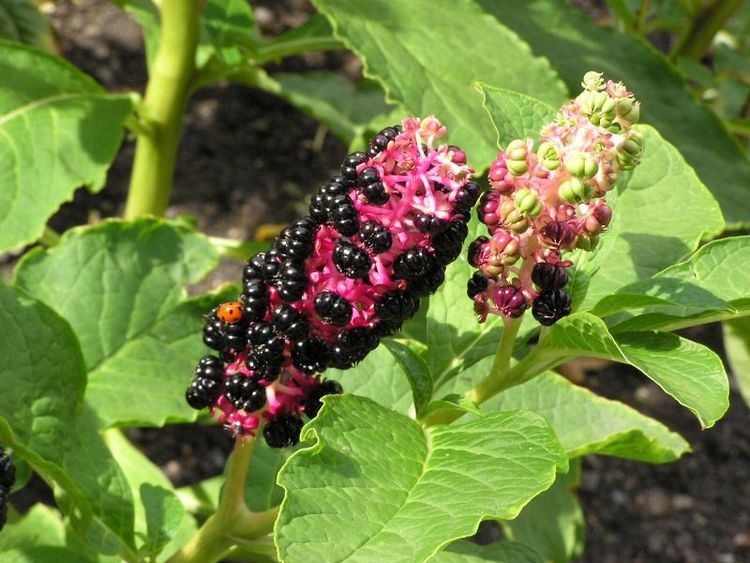
The genus comprises about 25 to 35 species of perennial herbs, shrubs, and trees growing from 1 to 25 m (3.3 to 82.0 ft) tall. They have alternate simple leaves, pointed at the end, with entire or crinkled margins; the leaves can be either deciduous or evergreen. The stems are green, pink or red. The flowers are greenish-white to pink, produced in long racemes at the ends of the stems. They develop into globose berries 4–12 mm diameter, green at first, ripening dark purple to black.
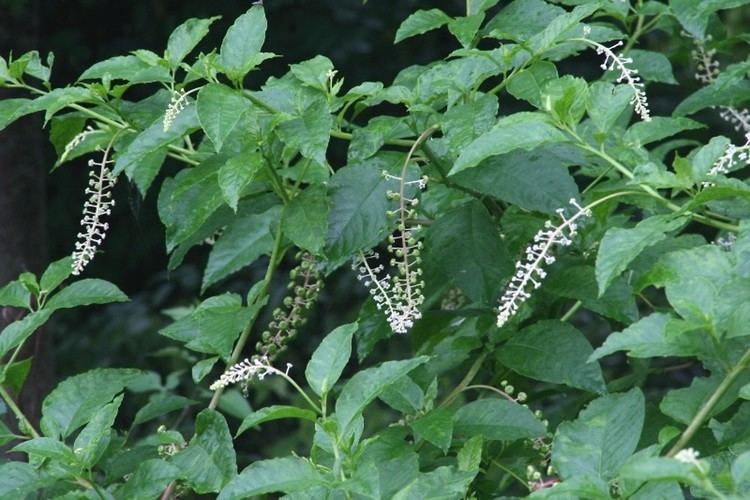
Eattheweeds episode 07 pokeweed phytolacca americana
Selected species
The following species are accepted by one or more regional floras:
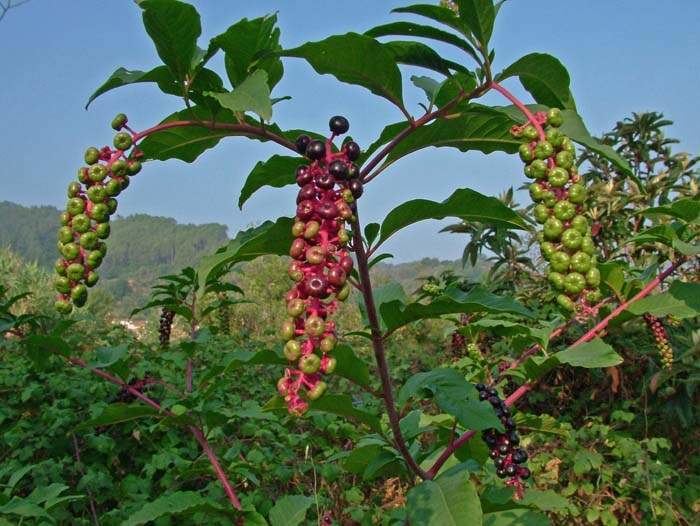
Formerly placed here
Ecology
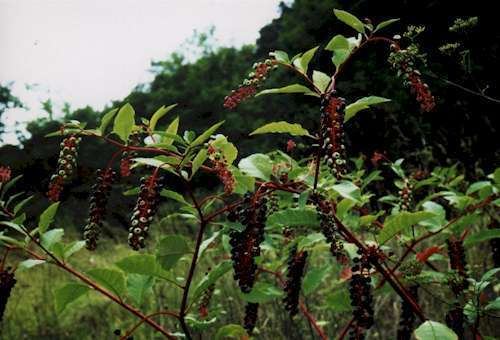
The ombú Phytolacca dioica grows as a tree on the pampas of South America and is one of the few providers of shade on the open grassland. It is a symbol of Uruguay, Argentina and gaucho culture. P. weberbaueri from Peru also grows to tree size. Both species have massively buttressed bases to their trunks, and very soft wood with a high water storage capacity which makes them resistant to grass fires and drought.
Uses
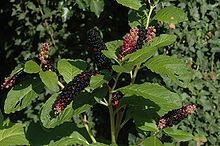
Phytolacca americana (American pokeweed, pokeweed, poke) is used as a folk medicine and as food, although all parts of it must be considered toxic unless, as folk recipes claim, it is "properly prepared." The root is never eaten and cannot be made edible. Poke salad ('poke salat') is considered part of traditional southern U.S. cuisine, where it is cooked three times in three changes of boiling water to remove some of the harmful components. Toxic constituents which have been identified include the alkaloids phytolaccine and phytolaccotoxin, as well as a glycoprotein.
